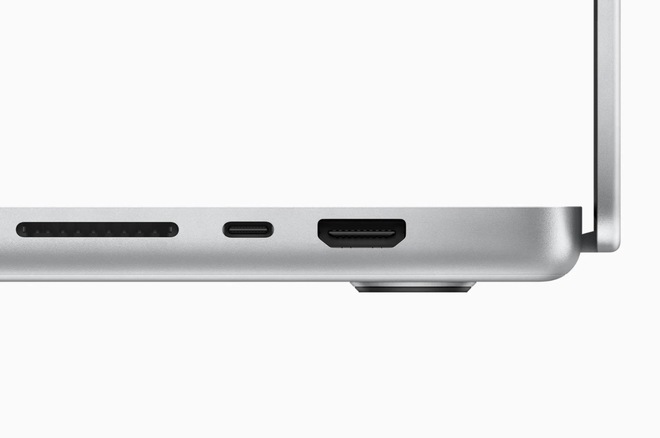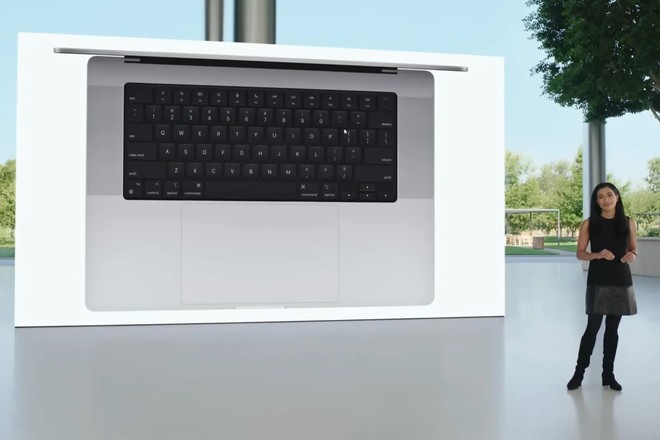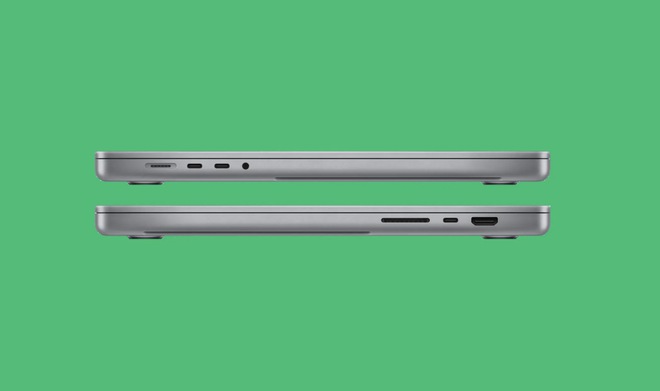Quietly healing, Apple created a problem with the MacBook Pro, then 5 years later came up with a solution on its own
- Tram Ho
There’s a lot to be said about Apple’s new 14- and 16-inch MacBook Pros, such as the improved Pro and Max versions of the M1 chip Apple launched last year, the return of MagSafe, a key sequencer, and more. functionality instead of the OLED Touch Bar, and of course, a full selection of ports that saves users from having to use an adapter if they want to import some photos from the SD card.
In fact, Apple has been so enthusiastic about these “new” features that it is enough for us to forget that Apple itself “killed” these features in 2016.

“Users appreciated the full row of function keys on the Magic Keyboard, and we brought it to the MacBook Pro,” said Apple’s Shruti Haldea as she explained the decision to remove the Touch Bar, the touch screen strip Apple enthusiastically introduced five years ago. Haldea continued: “ There are many types of portals that can make the lives of professionals a lot easier,” continued Haldea, succinctly summarizing what pro users have been complaining about for about half a decade. past century.
MagSafe, the nifty magnetic charger, also returned to the MacBook after Apple killed it in 2016.

While it’s clearly an act of “going to the past,” it can be said that this is a good past and Apple is doing it right. For the vast majority of users, a row of physical function keys is far more useful than a software-based Touch Bar that doesn’t appeal to developers, a series of easily accessible ports that make life easier for developers. It’s convenient for both professional and casual users, and MagSafe makes connections easier than USB-C cables and can prevent laptops from being damaged when someone gets entangled in the power cord.
But it’s hard to ignore the broader context of these “improvements,” and bringing the 2021 MacBook Pro back with the features Apple offered from 2012 to early 2016 might indicate that Apple made a wrong bet on the future of laptop design that day.
The MacBook’s transition to USB-C is said to begin with the 2015 12-inch MacBook, which includes only two ports: a USB-C port that charges, outputs content to the display, and connects other accessories; and a 3.5mm headphone jack. Next, with the MacBook Pro refresh in 2016, Apple’s assertion of a USB-C-only laptop future became really clear. Instead of the collection of Thunderbolt, USB Type-A, HDMI, and SD card ports that previous models had, the 2016 MacBook Pro lineup includes only a choice of two or four USB Type-C/Thunderbolt ports along with a jack. headphone plug. The era of adapters has begun.

Apple was one of the first computer makers to focus entirely on USB-C. The use of only USB-C is essentially unprecedented. USB Type-A still dominates on laptops and desktops, while Android manufacturers like Samsung are just starting to switch to Micro USB on their flagship phones.
Most people know what happened next: users were forced to spend money on additional adapters to be able to use the MacBook Pro with other devices. The MacBook itself may be thinner and lighter due to the lack of ports, but for professional use on the go, users have to spend more space for additional accessories. Shortly after the release of the 2016 MacBook Pro, Apple reduced the price of its USB-C adapter lineup to help users “switch” to the new standard.
Apple isn’t the only company to bet on USB-C that doesn’t work out. In 2018, a group of companies including AMD, Nvidia, Oculus, Valve and Microsoft announced VirtualLink, a USB-C connection standard for VR headsets that could allow them to be powered and stream data over a cable. Although the USB-C port appeared on Nvidia’s 20-series graphics cards, it was removed by the time the 30 series came out.
Many users see Apple’s abandonment of ports as a way for them to boost sales of their own USB-C accessories. Whether that was part of their plan or not, with the launch of the new MacBook Pro, Apple admitted it was betting on the future the wrong way. They thought accessories would develop connectivity the way they thought it would, but what happened was that people were forced to carry around bulky adapters just to perform basic tasks.

An interesting thing is that although Apple failed to remove a series of ports on the MacBook, they succeeded in another “death” decision, which is the 3.5mm jack. This is a decision that has created similar troubles and also raised suspicions that it was a monetization move to help the company sell more Bluetooth headphones. However, five years later, Apple’s decision seems to have been correct, as its competitors also follow. Now there’s a thriving ecosystem of third-party wireless headphones, and you don’t see anyone using Apple’s Lightning to 3.5mm adapters anymore.
Whether it’s because Apple is more dominant when it comes to smartphones, or because the benefits of wireless headphones to users are more obvious than USB-C accessories, everyone seems to have accepted the decision about the jack. Plug in Apple headphones. Apple has bet that the future of smartphone audio is wireless, and it seems to have paid off, but its decision to make USB-C the only connection on the MacBook does not.
Reference: TheVerge
Source : Genk
